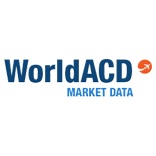
For the second month in a row, the worldwide average USD-yield improved month-over-month (MoM), this time by 1.0 per cent, down however, from last year’s MoM figure of +1.7 per cent. The YoY yield change was of a wholly different nature (-17.5 per cent%), but that deterioration should be viewed against the background of two important developments in 2015, according to the latest analysis from WorldACD.
Volume-wise, October 2015 was not spectacular either. For the now more than 60 airlines in WorldACD’s database, total chargeable weight grew by 1.8 per cent, slightly better than the comparable YoY figures for the past three months. The overall figure was dragged down by the Americas, showing volume drops of 2.0 per cent in the north and over 10 per cent in Central & South America.
All other origin areas showed growth: Asia Pacific 2.0 per cent, Africa and Europe 4.0 per cent each, and the Middle East & South Asia (MESA) 7.5 per cent. Inbound, Africa (-4.0 per cent) and Central/South America (-12 per cent) suffered.
The countries growing most formed a “mixed bag”, according to WorldACD with these including Australia, Bangladesh and Vietnam who continued their strong 2015-performance, Turkey and Norway also did well, while small countries such as Myanmar, Lebanon, Djibouti, Algeria and the Balkan countries, all showed very high YoY growth. No new developments in specific product areas where pharmaceuticals continued their marched (+14 per cent), followed by perishables (+5.0 per cent).
2015 in perspective
“A lot is being made of the stark worldwide yield decreases we have witnessed. However, as stated before, the yield developments of the past 12 months are truly one-of-a-kind: They simply cannot be equated with an extremely serious downward trend in air cargo, as some industry observers seem to want us to believe,” said WorldACD pointing to the vast amount of data at its disposal.
To start the company compared the first three quarters of 2015 with the same period in 2014. The main lesson, it said was that at this point in time, getting a better understanding of the fortunes of air cargo will not be helped much by making YoY comparisons of yields-including-charges. This is due to two developments it said: First a stark drop in fuel prices dating back to a little over a year ago, and secondly an increase in the use of all-in pricing.
Fuel prices worldwide have come down to less than 50 per cent of what they were mid last year. The worldwide USD-yield-including-charges decreased by 14 per cent in 2015 compared with 2014, almost exclusively as a direct consequence of lower fuel charges. Thus, the worldwide average price per kg (in USD & net of surcharge effects) stayed at the same level: In some instances it dropped a bit, in others it slightly rose. “Coupled with the fact that average prices per kg for all-in shipments remained stable as well, we draw the conclusion that – in terms of market development – the weakness in 2015 has been insufficient volume rather than adverse yield developments.”
The use of all-in pricing in air cargo has taken off, increasing from 11 per cent of total shipments in 2014 to 17 per cent this year, WorldACD noted, adding there are differences, some rather large, between geographical markets. In North America, already above average in 2014, the use of all-in pricing further increased, particularly for shipments to Europe. The origin Europe also saw strong growth, except to North America. Asia Pacific seems much slower than other areas in adopting the new habit.







